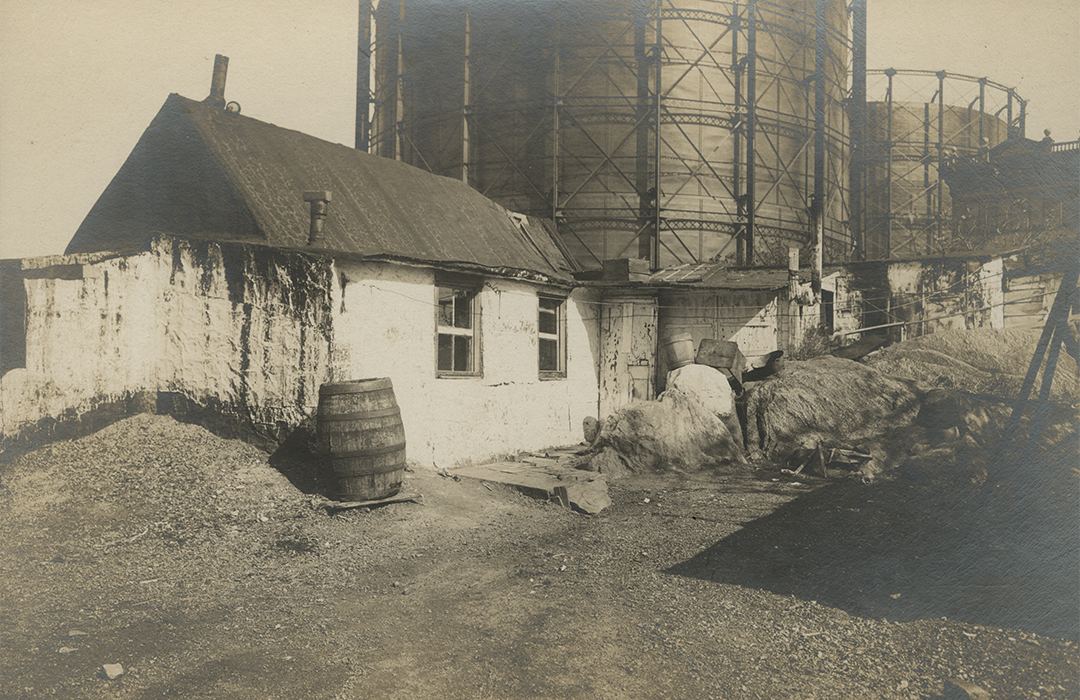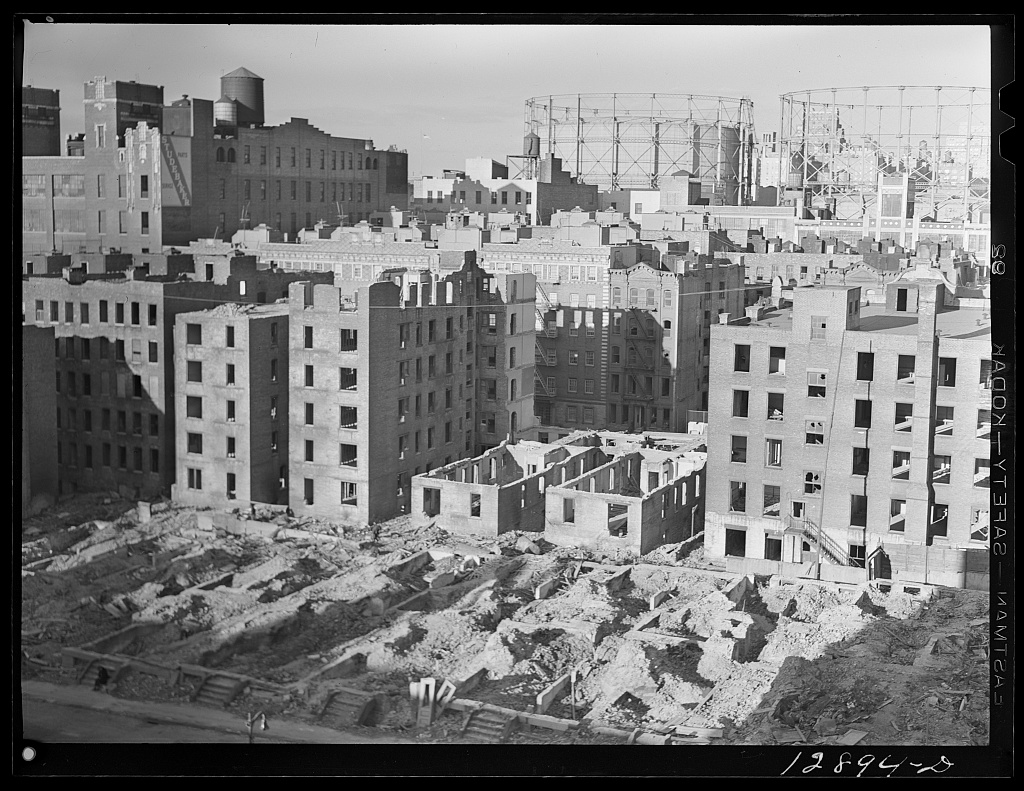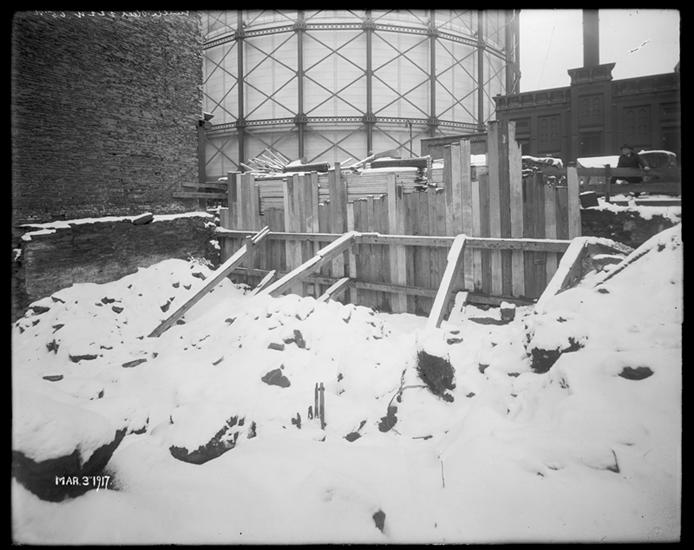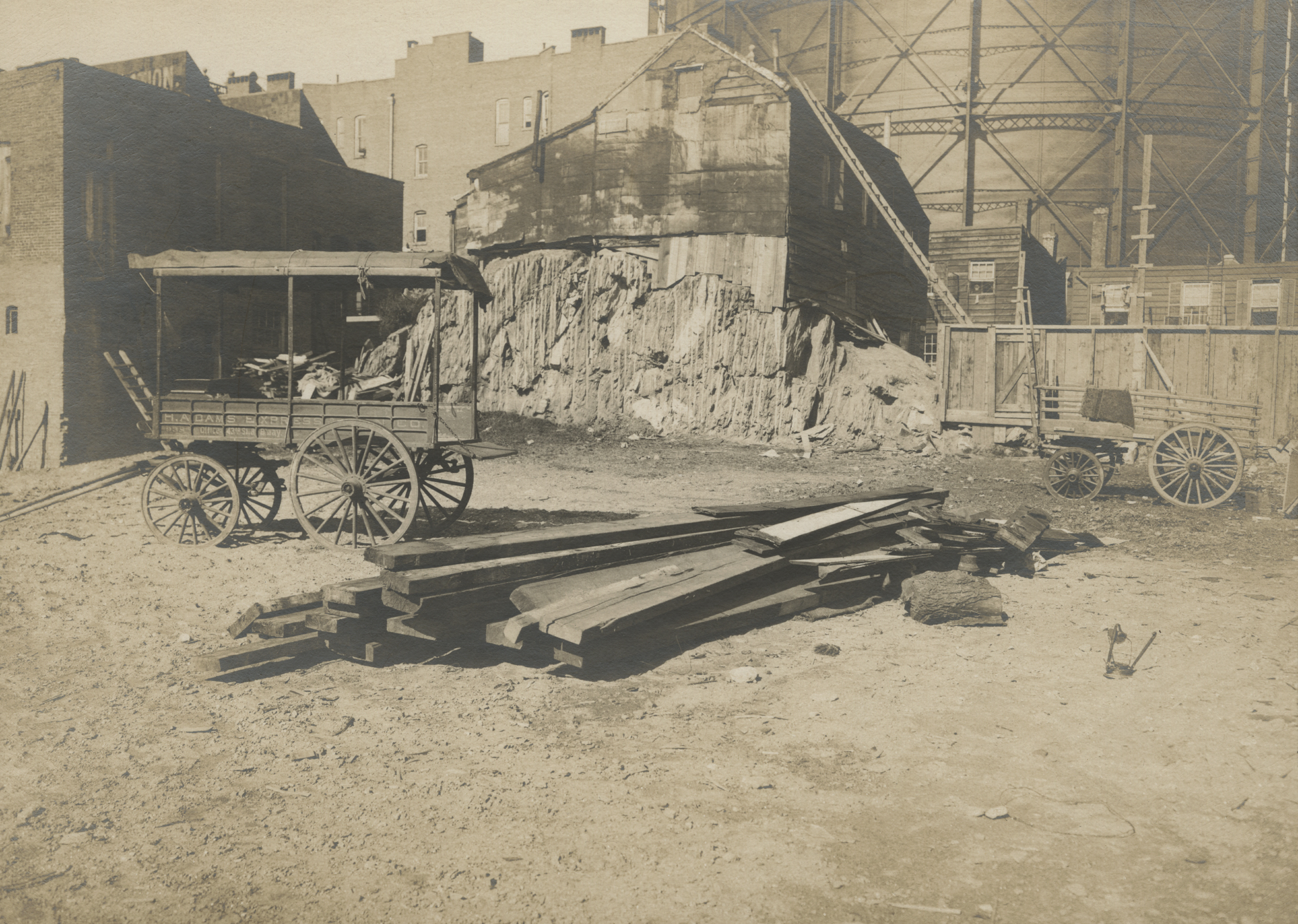
Block 1157
Block bounded by West 65th to 66th Streets, between West End and Amsterdam Avenues
By Jessica Larson
Today, the area between West 65th and 66th Streets, and West End and Amsterdam Avenues is home to Martin Luther King Jr. High School Educational Complex. Prior to the campus’s construction in 1969, however, the area was a part of the West Side’s industrial landscape, established when the area of Manhattan was still relatively undeveloped and distanced from the city’s residential centers.
In the mid-nineteenth century, the area that would become San Juan Hill was largely defined by what was called “nuisance” institutions–meaning structures meant to facilitate operations considered undesirous near human inhabitation. On the West Side, this included “bone-black” manufacturers, who transformed animal bone into charcoal, a lime kiln factory, and slaughterhouses. In approximately 1862, the Manhattan Gas Light Company constructed six large tanks to distribute illuminant gas throughout the city above Grand and Canal Streets, though no other structures were initially built on the San Juan Hill lots. Surrounding the tanks on the south side of West 65th and the north side of West 66th were a spattering of single-family dwellings, mostly fame construction. These were not numerous, however.
…more precarious, informal housing existed on the block for an unknown period of time
By 1879, additional buildings had been added to the block to support the manufacturer. Still, few other buildings were in the area. In 1883, all independent gas companies merged to become the Consolidated Gas Company of New York, today more popularly known as “Con Ed.” It was not until about 1890 that the neighborhood had become densely developed, with rowhouses replacing formerly frame farm homes. Some more precarious, informal housing existed on the block for an unknown period of time; photographs from 1904 show “squatters cottages” on the lots, which appear to have been constructed with ad hoc materials. The West Side was no stranger to shantytowns; just a few blocks east on West 64th, between Broadway and Central Park West, was a small squatters’ community called “Sunken Village.” This encampment was also destroyed in 1904 to make way for new developments. By 1907, two much larger tanks were added to the site, and in 1917, the initial smaller six tanks were removed, replaced by a row of one-story fireproof garages. Over the coming decades, more structures were added to the site to facilitate the work.
The block came under plans for the Lincoln Square Urban Renewal Area. After much delayed construction, the Martin Luther King Jr. High School was opened in 1975. Designed by the architecture firm Frost Associates and accompanied by a 30-foot high sculpture by artist William Tarr, this structure was a replacement for the former High School of Commerce, which had been at 155 West 65th Street (the current site of Juilliard) until it was demolished in 1964. Following contemporary modernist trends, the building was constructed with Mayari R steel and glass curtain walls, with an elevated plaza. The building faced considerable criticism from the beginning; similar to other contemporary school buildings in New York City, such as Harlem’s Intermediate School 201, significant portions of Martin Luther King Jr. High School’s classrooms had no exterior windows. Plagued for years by low student performance and curriculum issues, the school was closed in 2005 and the site was reassessed. The block now houses the Martin Luther King Jr. Educational Complex, which divided the previous high school building into seven separate schools. This was partially due to attempts to restructure the curriculum for better learning outcomes, with each separate school focusing on subjects ranging from law to the performing arts, as well as efforts to improve safety.
The building faced considerable criticism from the beginning
Resources:
Brown, Ernest C. Brown’s Directory of American Gas Companies: Gas Statistics. Press of “The Gas Age” (1917): p. 622.
Federal Highway Administration. Miller Highway Project Between West 59th Street to West 72nd Street, New York County: Environmental Impact Statement, Vol. 1 (1999): p. IV-103.
Neuwirth, Robert. Shadow Cities: A Billion Squatters, A New Urban World. Taylor & Francis. 2016
New York State Legislature. New York Legislative Documents, Vol. 8 (1919): p. 784.
Schlichting, Kurt C. Waterfront Manhattan: From Henry Hudson to the High Line. Johns Hopkins University Press. 2018.
Stern, Robert A. M., Thomas Mellins, and David Fisherman. New York 1960: Architecture and Urbanism Between the Second World War and the Bicentennial. Monacelli Press. 1995.
“Some New Books.” The Sun. May 14, 1893: p. 14.
Susan Heller Anderson and David W. Dunlap. “New York Day by Day: Dr. King Sculpture Protected by Planks.” New York Times. May 30, 1986: p. 2.
White, Norval, Elliot Willensky, and Fran Leadon. AIA Guide to New York City, 5th Edition. Oxford University Press. 2010.
Jessica Larson is a PhD Candidate in the Department of Art History, The Graduate Center, CUNY. She is also the Joe and Wanda Corn Predoctoral Fellow at the Smithsonian American Art Museum & National Museum of American History





